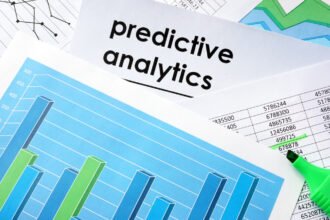 IT is an industry that’s always moving. While some things will never go out of style, like the Unix development model and knowing how to design algorithms properly, often you have to throw out what seems like a perfectly good tool or development style in search of something new.
IT is an industry that’s always moving. While some things will never go out of style, like the Unix development model and knowing how to design algorithms properly, often you have to throw out what seems like a perfectly good tool or development style in search of something new.
 IT is an industry that’s always moving. While some things will never go out of style, like the Unix development model and knowing how to design algorithms properly, often you have to throw out what seems like a perfectly good tool or development style in search of something new.
IT is an industry that’s always moving. While some things will never go out of style, like the Unix development model and knowing how to design algorithms properly, often you have to throw out what seems like a perfectly good tool or development style in search of something new.
While MapReduce has been the mainstay of Hadoop processing, Apache Spark is now taking the throne as the way to handle distributed computation. The reasons are obvious: Spark is very fast due to its use of Resilient Distributed Datasets, or RDDs, and it has a clean programming model.
If you’ve been using the older MapReduce framework, you might wonder how much you need to learn before you can jump in and start using Spark. Fortunately, it’s easy to convert what you already know from MapReduce to Spark.
Map and Reduce
The biggest difference from MapReduce is how the Map and Reduce options are implemented.
To understand this, you need to know how RDDs, Spark’s main data structure, work. RDDs allow for two kinds of operations on data: transformations and actions.
Transformationsare operations that change or filter operations in some way. Transformations are done nondestructively, keeping track of the original data. In a cluster, these changes can be spread out across different nodes. The master node keeps track of these different versions (called lineages) and can rebuild them on another node if one fails. It’s like having a giant RAID. An actionreturns some kind of result.
Given Hadoop’s history, one of the biggest transformations is map(), while reduce() is an action. As with their MapReduce counterparts, map() applies a function to a list, while reduce() aggregates data into a result. The big difference from MapReduce is that these operations are methods exposed by the RDDs themselves.
The programming model is much clearer under Spark than it is under MapReduce. MapReduce is written in Java, which, while not a bad programming language on its own, can be pretty bureaucratic in the way it makes you declare variables. Spark is written in Scala, a much cleaner functional language similar to Lisp or Haskell.
A program to count lines might take about ten lines or so to write—but you can do it in a few lines of code in Spark with an example borrowed from the Apache Spark Cheat Sheet:
val word1=fm.map(word=>(word,1))
val wrdCnt=word1.reduceByKey(_+_)
What this does is create a variable with the word count in it. We’ve defined the word count by creating key-value pairs with all of the lines, with a value of one in the first line. The second line uses reduceByKey to add all of the keys together. The “_+_” is a placeholder variable meant to add all of the values by key. It’s worth remembering that in Spark, RDDs operate on strings rather than key/value pairs.
We could have squeezed all of this into one line:
val wrdCnt=lines.map(line => (line.length, 1)).reduceByKey(_ + _)
This shows that Spark operations can easily be chained together.
Partitioning
Even though Spark on its own is very fast, you’ll want to make sure that all of the jobs are partitioned well across all your nodes. RDDs can be repartitioned in a customer manner, including by key, or value or even hashing the values.
Counters

You can use counters to count items, such as the line example we showed you earlier. While this can be done using MapReduce, Spark exposes something called accumulators, which are much more powerful. In addition to integers, you can also count using floating point.
Serialization
Spark and MapReduce can translate parallel operations back into serial data structures. In both systems, it’s possible to customize how this happens. In Spark, you have a choice of systems, from the default Java implementation to the Kryo version. All you really have to do is set a variable in the Hadoop configuration file.
Conclusion
If this article has whetted your appetite, you might want to try exploring the Spark documentation resources that are available. When you’re ready for a more advanced playground, this is a great resource to get you started with Spark in your own Sandbox.








